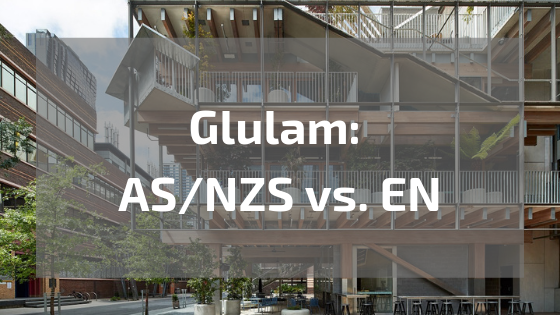Did you know that glue-laminated timber structural grades in Europe are different than here in Australia? If not, then you’ve come to the right place.
The confusion between the two grading systems started simply from how they’re labelled – both the Australian and European products label their glulam products using the GL’X’ descriptor, but refer to different structural properties.
The difference:
Australian/New Zealand (AS/NZS) system – the ‘X’ refers to the bending stiffness (Modulus of Elasticity) in gigapascals (GPa)
European (EN) system – the ‘X’ refers to the bending strength (Modulus of Rupture) in megapascals (MPa)
Due to this vast difference of labelling, a table was collated to demonstrate the Australian strength classes that have been ‘re-labelled’ using the European system.
|
AS/NZS GL grades based on stiffness |
AS/NZS GL grades if “relabelled” using the EN system |
Typical EN Glulam Grades |
|
GL8 |
GL19 |
|
|
GL10 |
GL22 |
GL22, GL24 |
|
GL12 |
GL25 |
GL26, GL28, GL30 |
|
GL13 |
GL33 |
GL32 |
|
GL17 |
GL40 |
|
|
GL18 |
GL45 |
|
Take MASSLAM as an example, these large end-section glulam members are currently rated to GL18 according to AS/NZS standards. If the same MASSLAM members were to be tested under the EN system, they would achieve a rating of GL45. Find out more about the MASSLAM strength properties here.
What does this mean for you?
Next time you’re working on a project that requires a structural glulam member, double check what standards the rating is adhering to. If the rating is over GL18, it will be referencing the EN strength classes. Here at ASH, we are sometimes asked if we have something stronger than GL18 by specifiers who are trying to meet (the lesser strength) GL24 or similar. Reality is that our MASSLAM GL18 will meet the same strength requirement with significantly less wood fibre.
To learn more about these labeling comparisons, head to this Wood Solution’s blog or if you’d prefer to discuss the different grading systems with a MASSLAM specialist, call 03 5139 7070.
"*" indicates required fields
